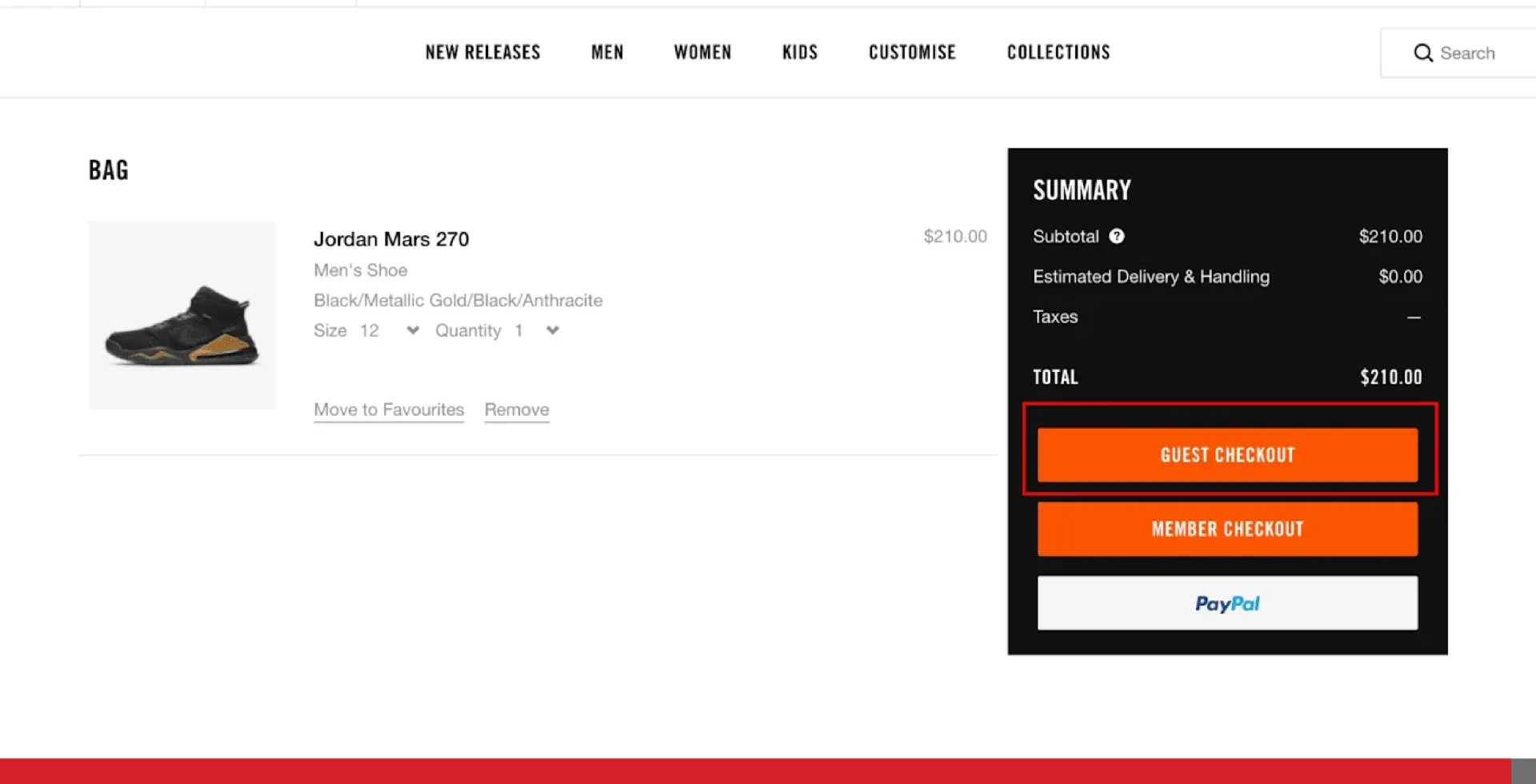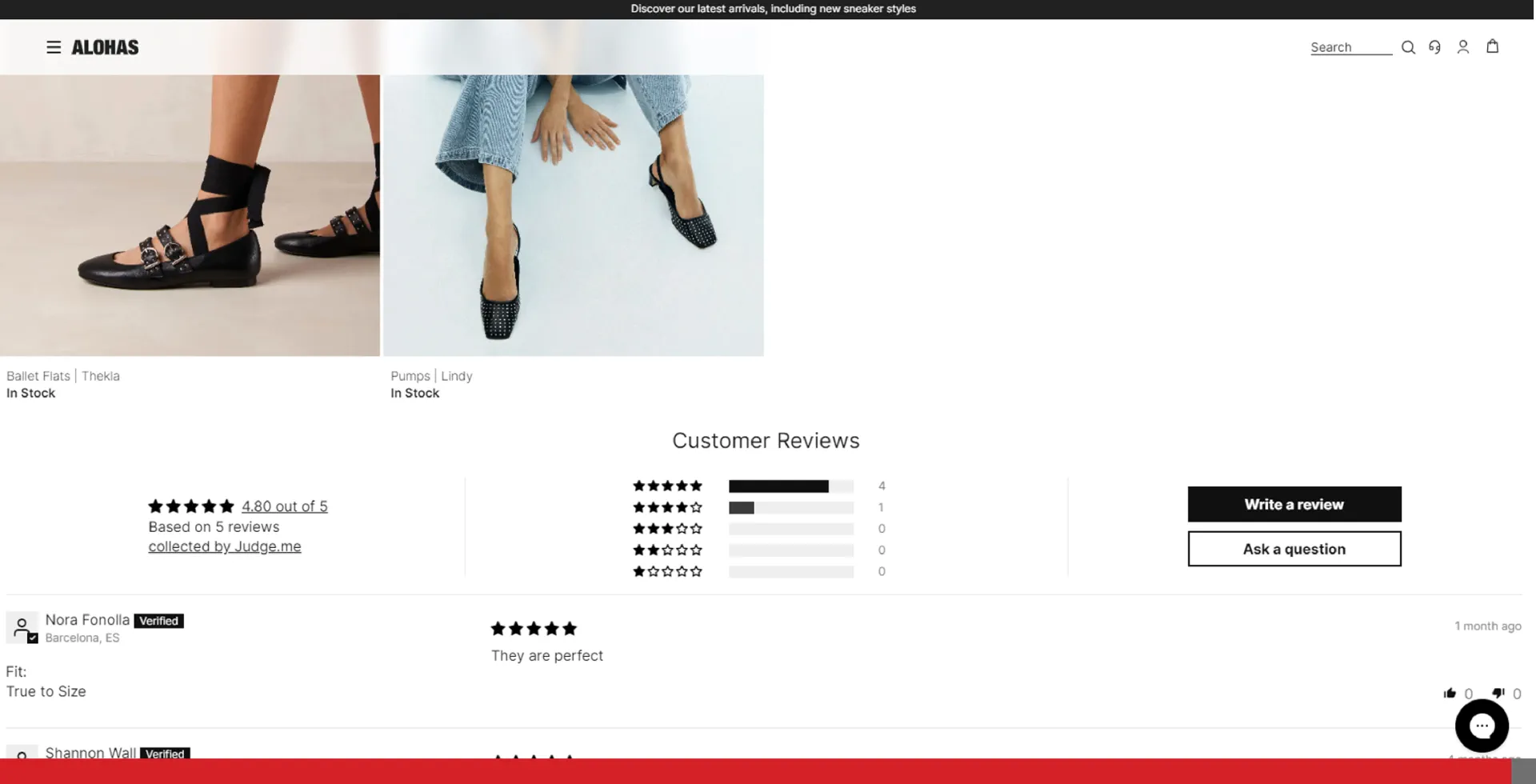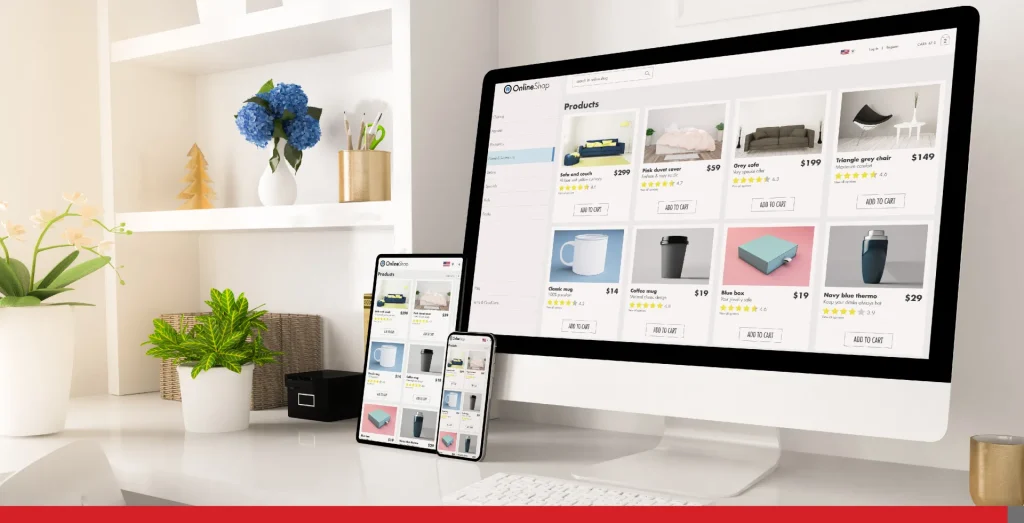With more and more people turning to the Internet to shop, having a strong online presence is essential το Increase eCommerce sales.
However, simply having a website is not enough. You need a solid digital marketing strategy and the right web host to drive traffic and convert prospective customers into long-time buyers.
In this EasyHosting article, learn how to increase eCommerce sales, as well as the best practices for choosing the right web host for your small eCommerce business.
- Why eCommerce Sales Stagnate
- 7 Strategies To Increase eCommerce Sales: Understanding What Drives Them
- Why Does Your Web Host Matter, and How Do You Choose the Right One?

Why eCommerce Sales Stagnate
It’s common to hit an eCommerce sales plateau. That said, there are ways to increase your eCommerce sales.
But you need to identify why this happens before you find the solution. Here are some reasons why your eCommerce sales might be stagnating:
- Subpar web hosting: Poor web hosting can lead to frequent downtime, slow loading times, and security vulnerabilities, all of which can negatively impact user experience and search engine rankings.
- Lack of web optimization: If your website has slow loading times, poor navigation, or a confusing checkout process, you’re likely turning away potential customers. You need to build a professional website to rank on search engines and encourage visitors to purchase from your online store. Not having stellar web hosting can also be one of the reasons for poor optimization.
- Lack of security and trust elements: Another reason you might be facing a downturn in eCommerce sales is due to the lack of transparent policies, customer reviews, secure payment options, and trust badges on your site.
- Inefficient marketing strategy: You are running marketing campaigns, but how effective are they? Are you reaching the right audience? Are you even measuring their success? If not, begin by measuring your results and improving what’s not working.
- Market saturation: If you’re functioning in a competitive market, you’re probably not standing out amid competition. But you can differentiate yourself by offering unique products, creative marketing campaigns, and great customer service.

7 Strategies To Increase eCommerce Sales: Understanding What Drives Them
1. Choosing the Right Web Host
One often overlooked factor that can significantly impact sales is choosing the right web host.
Your web host affects how well your website performs, including its loading speed, uptime, and security. Even a small downtime can result in lost sales.
For example, when Amazon experienced a major outage in 2013 that lasted for nearly 30 minutes, it cost the company an estimated $66,240 per minute in lost sales.
One way to avoid this is by picking the right web host that offers all the web hosting features your business needs to function properly. Here are some tips to consider when looking for a secure web host for your eCommerce site:
- Look for one that offers an excellent user experience. Your web host should offer reliable uptime and fast loading speeds.
- Is it scalable? Consider the scalability of the web host to accommodate your store’s growth. It should be able to handle the surge in traffic.
- Pay attention to the security features offered by the web host. Your web host should have security features like SSL certificates and regular backups to protect your store and customer data.
When looking for eCommerce web hosting, don’t forget to check their reviews and track records.
And most importantly, consider how well they handle negative reviews. Are they open to constructive customer feedback and willing to rectify issues if things go south? If not, you should probably consider someone more reliable.
2. Prioritizing Convenience and Speed for Existing Customers
This one’s a given. A fast-loading and easy-to-navigate website is more likely to entice customers and make them stick around, eventually driving sales.
Begin by optimizing your desktop as well as mobile site for speed. You can do this by optimizing your images and website themes and carefully picking your eCommerce web hosting provider.
But that’s not all.
You have to create a well-rounded eCommerce store to offer a convenient shopping experience to your potential customers.
Firstly, simplify the checkout process to reduce friction and minimize cart abandonment.
To encourage your visitors to make the final purchase, allow them to checkout using guest checkout options and autofill forms. You can also use progress indicators to make the process easier for them.
Look at this one-page checkout option by Nike, for example. It has minimal form fields, and you can even modify your item’s size and quantity directly from the checkout page.

This makes it super easy to finish the purchase without abandoning the cart to look for better options.
3. Creating a Mobile-Responsive Website
Ever since mobile phones came into our lives, a large portion of online shopping occurs on smartphones and tablets.
According to Statista’s Digital Market Insights, 2023 mobile eCommerce sales revenue hit about $1.7 trillion, making up more than half of all online retail sales.
This shows just how important it is to create a mobile-responsive website. For the uninitiated, a mobile-responsive website means it adapts to different screen sizes and mobile devices.
How will you create a mobile responsive site? Here are some tips:
- Keep navigation and menu bars simple, so they fit smaller screens.
- Optimize your mobile site for speed.
- Use mobile-friendly forms that are easy to fill out on a small screen.
- Test your website across different devices and browsers.
- Regularly update your website to stay current with mobile trends and technology.
Pro Tip: To optimize user experience and increase conversions, consider hiring a reputable Conversion Rate Optimization (CRO) agency specializing in improving website performance and user engagement.
4. Offering Stellar Customer Support
Customer support is one of the biggest deciding factors for customer satisfaction and loyalty, which ultimately helps increase eCommerce sales.
For starters, offer multiple communication channels, including live chat, email, and phone support, to address customer queries and issues promptly.
Secondly, resolve all customer issues before they turn into frustrated negative reviews online. If they do turn into negative reviews, don’t ignore them. Address them duly and work on retaining the customer by resolving their issue and offering an incentive.
You can also utilize explainer videos to onboard new customers and educate them about your products or services. This will negate the need for them to seek customer support for basic questions, which is convenient for them as well as your customer support team.
5. Leveraging Social Proof
When potential customers see proof that other buyers like your product and find it useful, it solidifies their buying decision.
Social proof is a powerful psychological phenomenon where people assume the actions of others in an attempt to reflect correct behaviour for a given situation.
For example, the famous show brand Aloha showcases customer reviews prominently on each product page. This helps buyers feel more confident about their purchase requisitions by looking at your high-quality product images.

Aside from displaying positive reviews, case studies, and testimonials from satisfied customers, you can also leverage user-generated content (UGC).
UGC involves sharing photos and videos of existing customers using your products to create a sense of authenticity and reliability. It will also help you inspire trust in new customers and give your products a sense of credibility.
6. Cultivating Brand Trust and Loyalty
If you want long-term success in eCommerce or any type of business, you need to inspire brand trust and loyalty in your target audience.
First and foremost, ensure your brand messaging is consistent across all channels, including your website, social media platforms, and marketing materials. This is the first step in building brand recognition and trust among your audience.
Once you lay this foundation for brand recognition, follow these best practices to cultivate brand trust and loyalty:
- Be transparent. Don’t hide vital information about your products, pricing, and business practices. Authenticity builds trust with customers and sets you apart from competitors.
- Offer excellent customer service. When existing customers know you’re always available to resolve any issues they may have, it naturally leads to more trust and loyalty.
- Deliver high-quality products. Offer products that not only meet customer demands but exceed them.
- Reward loyalty. Offer loyal customers exclusive discounts, offers, or rewards programs to incentivize repeat purchases and strengthen customer loyalty.
Aside from these, don’t overlook customer security to put their mind at ease. For example, consider implementing multi-factor authentication (MFA) or time-based one-time passwords (TOTPs) for customer accounts to enhance security and build trust by protecting against unauthorized access.
Furthermore, optimize your eCommerce operations and increase sales by cutting transportation costs—a significant expenditure for many online businesses. Streamlining your shipping process can attract more customers by allowing you to offer competitive shipping rates or even free shipping promotions.
7. Implementing Personalization
Gone are the days when you could promote your products by crafting engaging email marketing campaigns and calling it a day.
With so many options right at their fingertips, your customers expect a better, more personalized shopping experience.
Luckily, with the latest tech and data available, you can personalize various aspects of the customer journey—from product recommendations to marketing messages.
With customer data and analytics tools like Hotjar and Google Analytics, you can access previous purchases and shopping behaviour. You know how they shop from your site, their preferences, and at what point in the customer journey they usually abandon the site.
With all the data, here’s everything you can personalize for your customers:
- Create personalized product recommendations based on past purchases.
- Display dynamic content on your website based on user behaviour and preferences.
- Provide discounts and promotions based on customer interests and behaviour.
- Personalize the customer journey to make it seamless and relevant.
For example, Sephora uses its Beauty Insider loyalty program to segment its audience based on past purchases and sends personalized beauty tips and product recommendations.

The result? It’s now one of the most recognized online stores.
Another often overlooked way to implement personalization is by content localization. You can tailor your content to resonate with local audiences, showing that you understand their culture and preferences. This way, they’ll be more likely to buy from you and turn into your loyal customers.
Why Does Your Web Host Matter, and How Do You Choose the Right One?
Your choice of web host can significantly impact your eCommerce business’s success. From site speed to security and everything in between, here’s why your web host matters and how to pick the right one:
Site Performance and Speed
A fast-loading website helps you retain website visitors and improves search engine rankings, while a slow-loading will turn visitors away, ruining your conversion rates.
That’s why it’s important to choose a web host that offers high-speed servers and optimized performance. You might also want to consider using a content delivery network (CDN) to improve loading times.
Reliability and Uptime
Downtime can lead to lost sales and damage to your brand’s reputation. To avoid disruptions, look for a web host with a reputation for high uptime reliability (99.9% or higher).
Best eCommerce hosting providers also offer automatic backups and redundancy to minimize data loss and downtime.
Security and Data Protection
With prevalent cybersecurity threats, it’s more important than ever to protect your customer’s data and ensure secure transactions.
To ease your customers’ concerns, choose a web host that offers security features like SSL certificates and regular security updates. You may also want to look for advanced security features like DDoS protection and malware scanning.
Scalability and Growth
Sometimes, you might get a sudden surge in traffic, especially during peak shopping seasons. While you might not be able to handle it yourself, eCommerce hosting providers do it for you.
So, when looking for a web host, ensure it can accommodate your site’s growth and increased traffic.
Select a host that offers scalable hosting plans or the ability to upgrade easily. Don’t forget to consider future needs, such as additional storage and bandwidth requirements.

Boost eCommerce Sales With the Right Strategies and Web Host
Having more sales in your eCommerce store requires a combination of the right strategies and choosing a suitable web host.
You can drive traffic and conversions by optimizing your website for performance, ensuring security and reliability, and implementing personalized marketing tactics.
When it comes to choosing a web host, EasyHosting stands out as a top choice. With its user-friendly website builder and reliable hosting services, it can help you build a strong digital brand and boost your online sales.
Start your journey to eCommerce success today, with EasyHosting.
Email us at support@easyhosting.com
Call us: 1-888-390-1210
Author: Cassandra Rosas, SEO Outreach Team Lead at Omniscient Digital.

